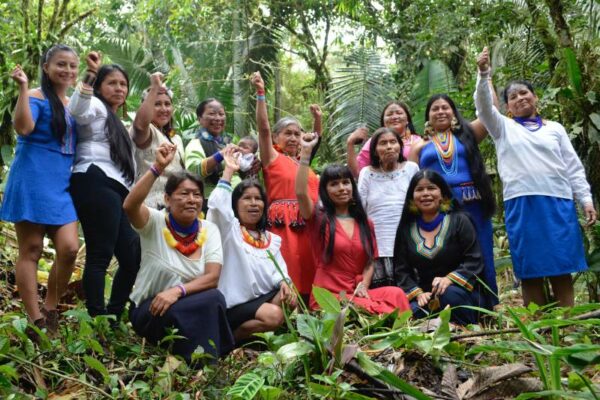Glasgow, UK – During climate talks at COP26 in Glasgow, experts and representatives of Indigenous nationalities shared their vision regarding what the strategies should be to stop the continuous degradation and deforestation of Amazonia, which have led the rainforest to a point of no return: 22% percent of the total area of the basin has been deforested and degraded.
This scenario is a red alert about the state of emergency across Amazonia, the need to urgently protect the region, and prevent its definitive “savanization.” For this reason, a group of researchers and Indigenous leaders delivered strategies at a COP26 webinar further defining the opportunities to recover it and protect 80% of that territory by the year 2025.
The new scientific evidence, presented on Monday, October 31 by a team of experts from the Amazonian Geo-referenced Socio-environmental Information Network (RAISG), provides an “x-ray” of the current deterioration of the Amazon region that includes the biome, the basin, the headwaters and other ecosystems present in nine countries. These results emphasize the importance of the ancient knowledge of Indigenous peoples in the protection of local forests and how, together, with the scientific research, we can build a clear roadmap for governments, experts, civil society and join forces with the Indigenous peoples who live in this immense region.
72% of the Amazon is categorized as “high priority” to protect due to its biodiversity and ecosystem functionality. 31% correspond to areas without any intervention that covers 273 million hectares of forests, wetlands, and other ecosystems. Of these, 203 million hectares are primary forests without any type of protection or land designation. An additional 41% are areas with low disturbance. Finally, to reach 80% protection by 2025, a restoration of at least 8% of the highly disturbed territories is required.
“Indigenous peoples have built a strategy with various allies of civil society and a new vision of protection for the Amazon, with a rights-based approach, including the preservation and adoption of ancient wisdom from Indigenous people, which has conserved forests for thousands of years. Another approach is the scientific one. Western science has changed life on this planet, so we want that science to join with our wisdom to save the planet, to save the Amazon,” said José Gregorio Mirabal, General Coordinator of COICA.
He added that, “the money to protect the forests reaches the governments, but it does not reach the communities, we are the ones who take care of the forests every day. We need technical support and financial support for the communities that are caring for the jungle, not for the bureaucracy or corruption. Many announcements have been made at these conferences, but no one has said how the money will come to the communities.”
Marlene Quintanilla, Director of Research and Knowledge Management at the Friends of Nature Foundation (FAN), explained that there are 31% of regions that are not yet protected in the Amazon and that require an immediate level of protection in order to consolidate Indigenous territories and create or expand Protected Areas, in addition to other policies for the protection of ecosystems that respect the Indigenous governance structure in each territory. The aim is to increase the connections between the regions and increase the level of existing and native biodiversity.
Quintanilla warned that one of the current risks in terms of protection of the Amazon, is the lack of clarity regarding the criteria to establish how illegal deforestation should be interpreted in each country, because with each hectare in which land use changes, the local and regional impacts are enormous. “There should be more immediate strategies to protect more hectares of forests in each country that makes up this region. There are 203 million hectares that need to be demarcated and assigned in a legal way. “
For his presentation, Mauricio Mirelles, FAO Policy Officer for Indigenous Peoples and Social Inclusion, endorsed the importance of the data presented by the RAISG study and focused on explaining the importance of the ancient practices of Indigenous peoples and how their contribution has made possible the preservation of forests. For example, he explained that these practices made it possible for the vegetation of the Amazon to capture 90% of its own carbon between 2003 and 2016, which during that time frame was equivalent to its emissions. “There were net carbon emissions,” Mirelles said. He added that “that is why it is important to strengthen collaboration and put them into practice so that these protected areas are expanded. Maintaining forests on lands managed by Indigenous peoples would prevent the presence of new pandemics, too.”
Carlos Nobre, one of the experts leading the Scientific Panel for the Amazon and one of the most renowned scientists for their research on the Amazon’s climate, criticized the Glasgow leaders’ statement on forests and land use, presented on Monday, November 1, because this vision places a greater emphasis on putting a billion dollars in sustainable agriculture, but it is not clear how much of the economic support would be for Indigenous peoples, who are concerned that the financing to protect the Amazon will go only to farmers, for more carbon emissions from soybeans and livestock. “To reach zero deforestation it is necessary to stop the policies aiming to change land use and stop making legal, what was already illegal.”













